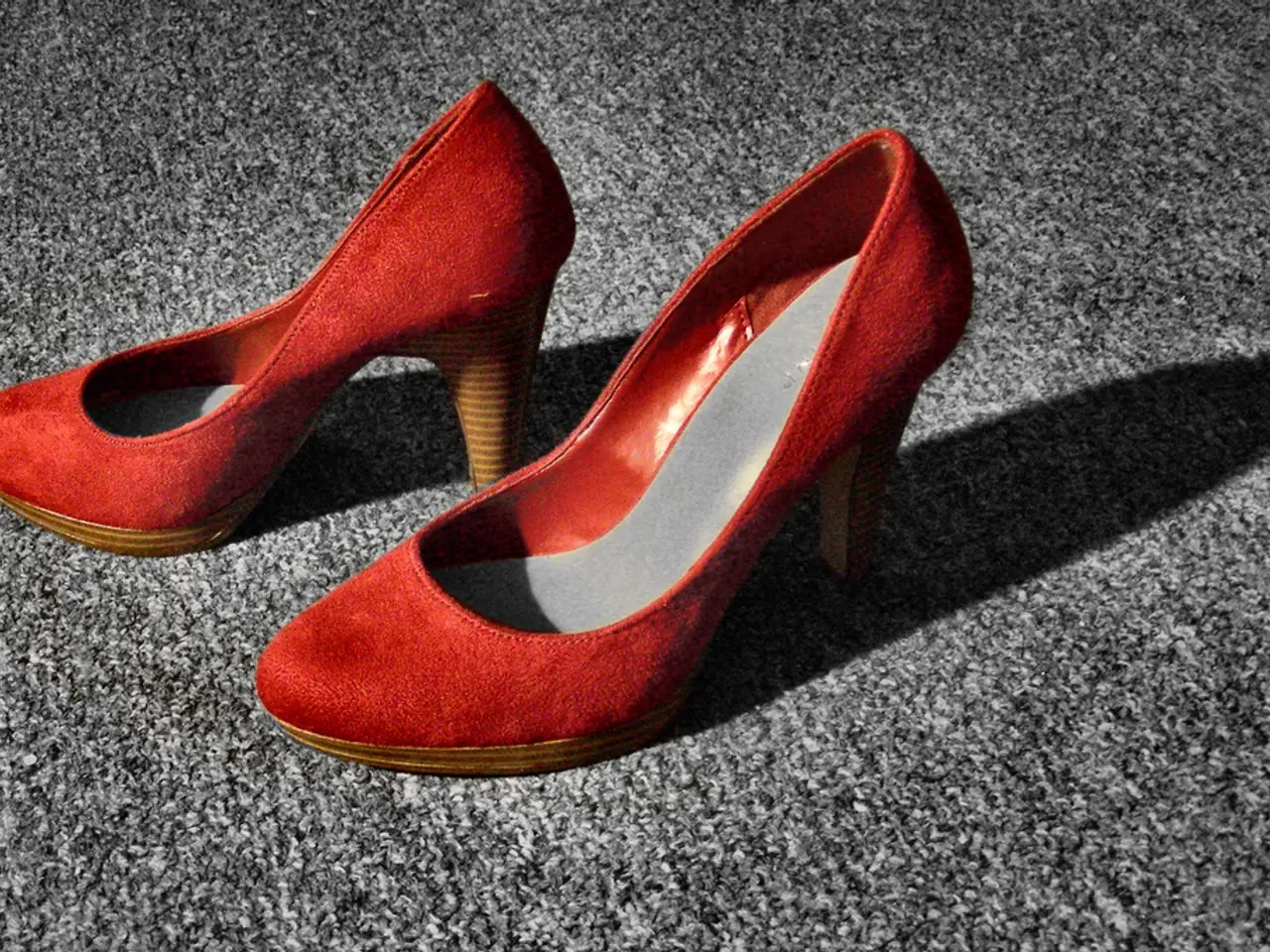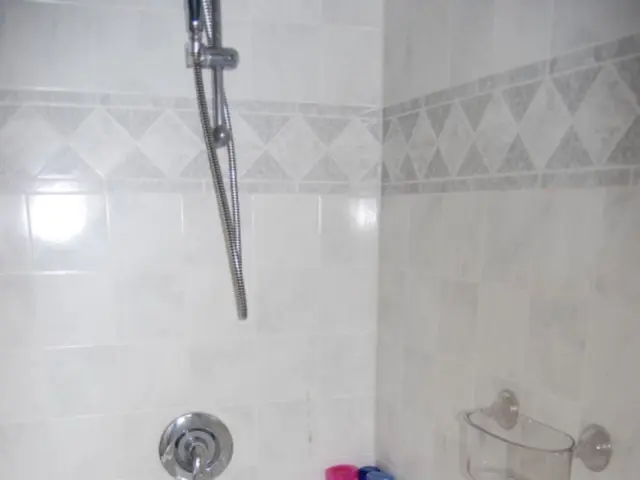Foot rotation ("Supination"): Underlying causes and management options
Excessive supination, also known as underpronation, is a common foot problem that can lead to a range of issues, from foot pain to more serious injuries. This condition occurs when the foot rolls outward excessively during the gait cycle, which can cause misalignment and poor form during exercise.
Understanding the Causes
Rigid or tight shoes, worn-out shoes without arch support, and shoes with poor fit can all contribute to supination. A sedentary lifestyle, constant impact on hard and firm surfaces, standing for long periods, stiffness due to aging or arthritis, too much exercise, and prior injury can also increase the risk of supination. In many cases, people with excessive supination have structural issues in their feet, such as leg length differences, foot width, ankle stability, or foot arch shape.
Identifying Supination
Examining old shoes can help indicate excessive supination, as the soles may wear down from the outer edge of the heel toward the center in people with a neutral gait. A wet footprint test can also help determine gait problems, with a visible half arch suggesting a normal gait and only a fraction or none at all suggesting supination. For a more accurate diagnosis, a gait analysis, performed by a podiatrist or physical therapist, can help identify supination.
Effective Treatments and Preventive Techniques
Treating excessive supination effectively involves a combination of customized orthotic support, strengthening and stretching exercises, proper footwear, and clinical interventions when necessary. Custom or prefabricated orthotic insoles are commonly prescribed to provide cushioning and correct foot alignment, reducing the impact of supination. These insoles help redistribute pressure and improve gait mechanics. Supportive shoes designed for supination with adequate cushioning and arch support are also recommended.
Strengthening and mobility exercises help activate the smaller intrinsic foot muscles, increase foot and ankle flexibility, and improve overall foot stability. Examples include toe spreads, ankle circles, towel curls for foot muscles, and calf stretching to reduce tightness in the Achilles tendon and calf muscles.
If supination causes pain or injuries such as Achilles tendonitis or plantar fasciitis, management may include rest, ice, compression, elevation (RICE method), nonsteroidal anti-inflammatory drugs (NSAIDs), and in severe cases, surgical intervention may be considered.
Preventive techniques include wearing shoes that fit well and have appropriate support for supinated feet, incorporating daily exercises like toe spreads, ankle circles, and towel scrunches to strengthen foot muscles and improve flexibility, and regular calf and Achilles tendon stretches to maintain muscle and tendon flexibility.
Consulting a podiatrist or orthotist for gait assessment can help identify supination early and provide tailored orthotics and exercise plans to prevent progression or injury.
In conclusion, managing excessive supination effectively involves a combination of customized orthotic support, strengthening and stretching exercises, proper footwear, and clinical interventions when necessary. These approaches not only treat symptoms but also prevent complications associated with underpronation.
This information is based on recent expert guidance from podiatry and orthopedic sources.
[1] American Academy of Orthopaedic Surgeons. (2021). Foot and Ankle Pain. https://orthoinfo.aaos.org/en/diseases--conditions/foot-and-ankle-pain/ [2] American Podiatric Medical Association. (2021). Foot Health Facts. https://www.apma.org/Learn/Foot-Health.aspx [3] Mayo Clinic. (2021). Plantar Fasciitis. https://www.mayoclinic.org/diseases-conditions/plantar-fasciitis/symptoms-causes/syc-20355863 [4] Runner's World. (2021). How to Choose the Best Running Shoes for Your Feet. https://www.runnersworld.com/gear/a31631379/how-to-choose-the-best-running-shoes-for-your-feet/ [5] Sports Injury Clinic. (2021). Foot Pain. https://www.sportsinjuryclinic.net/sport-injuries/foot-injuries/foot-pain
- Under-explored connections between excessive supination and medical conditions like ulcerative colitis, Crohn's disease, asthma, psoriasis, eczema, COPD, or even health complications such as obesity, bipolar disorder, and HIV remain largely speculative within the realm of science.
- Conversely, maintaining proper foot mechanics, as achieved through addressing excessive supination, can have a positive impact on overall health and wellness, potentially enhancing one's ability to engage in fitness and exercise.
- Some researchers suggest that medical professionals may require a more predictive and interdisciplinary approach when managing patients with excessive supination, incorporating the understanding of foot mechanics into the wider picture of health-related implications.
- Intriguingly, science may one day uncover shocking associations between seemingly disparate medical-conditions such as HIV and bipolar disorder, as well as fitness-related ailments like eczema or plantar fasciitis, and the role that foot mechanics - including excessive supination - might play in these connections.
- Interestingly, athletes participating in high-impact sports like distance running might experience foot-related issues such as psoriasis or eczema, which may be exacerbated by the underpronation associated with their sport, potentially leading to an increased risk of collateral health issues.
- To deter the development or aggravation of such foot issues, India could capitalize on global athletic events like the annual Toronto Waterfront Marathon, utilizing state-of-the-art medical analysis for participants' foot mechanics, providing personalized orthotics, and promoting proper footwear to mitigate the risks of supination and subsequent health-related conditions.
- As increasing evidence points to the interplay between foot mechanics, fitness, and overall health, it's essential for medical professionals to emphasize fitness and exercise as essential elements of overall well-being, considering the potential ramifications of foot-related conditions extending beyond the locus of the foot itself.
- Additionally, public discourse surrounding foot mechanics and the interplay between foot anomalies, physical fitness, and overall health could garner more attention in the areas of science, health-and-wellness, and sports journalism, potentially enabling a more holistic approach to athletic training, injury prevention, and healthcare.




